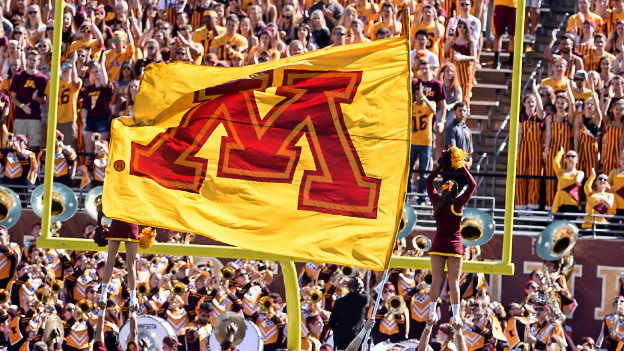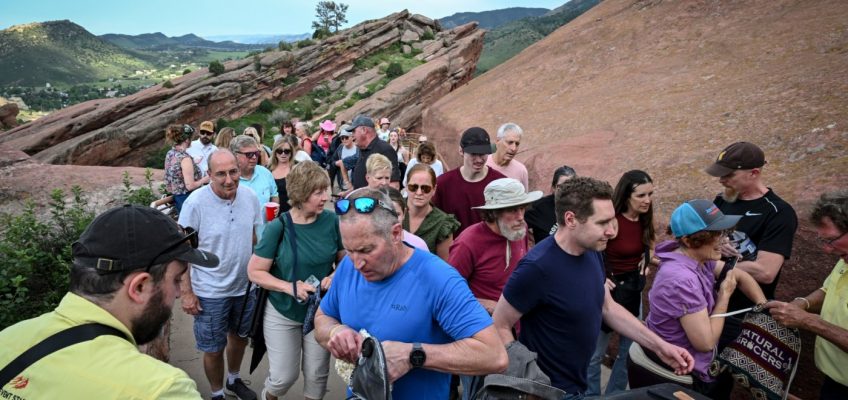Koi Perich’s offensive role against Buffalo was a soft opening.
The Gophers standout played only seven snaps in the season-opening 23-10 win Thursday at Huntington Bank Stadium. On the second offensive play of the game, he caught a 12-yard out route along the sideline. That was the peak.
It was his only target of the game. On the second series, he lined up in a wildcat formation alongside tailback Darius Taylor, who kept the snap for a short gain.
“Offensively, we had a plan to play him more if we needed to,” head coach P.J. Fleck told the Pioneer Press on Monday.
The 17-point favorite Gophers led the Mid-American Conference opponent all game and pulled away with a one-sided, 10-point fourth quarter.
On defense, Perich played all 44 snaps, contributing two tackles.
KFAN sideline reporter Justin Gaard observed during the game that Perich “was itching” to contribute more, especially in the return game.
Buffalo had seven punts, but Perich was able to return only one, which he took back 18 yards.
Fleck previously said Perich’s contributions on offense will not be a gimmick this season, so fans can expect more snaps and touches in bigger games later on this season.
Catalyst?
Compared to Buffalo, the Gophers will be an even bigger betting favorite against Northwestern (La.) State at 11 a.m. Saturday in Minneapolis.
The Demons snapped a 20-game losing streak — the longest in FCS — with a 20-10 win over Alcorn State on Thursday. The skid started in November 2022.
“I don’t think I’ve ever seen a team and a campus and a city as in need of a win as this football team, this university and Natchitoches did,” Northwestern State coach Blaine McCorkle said in the Vicksburg Post. “It allows everybody to take a sigh of relief and lets people know that this football program, this city and this campus loves so much is alive and well, and we’re going to be A-OK. A new day’s coming.”
Fleck compared Northwestern State’s win to what the Gophers did in snapping a 14-game losing streak to Wisconsin in 2018. “Those are program-defining wins that can really jumpstart a whole program,” he said.
“Horrible call”
Fleck doesn’t entertain hindsight very often, but was willing to do so Monday over the tush push play call in the first quarter on Thursday.
“That was a horrible call,” Fleck lamented. “That was bad. … When you are sitting there as a head coach saying, ‘I think I should call a timeout here. I really should call a timeout here.’ Ugh. Idiot.”
It was listed as fourth and inches, but it was more than a yard and 1/2, Fleck estimated.
“We call the tush push and we have 15 different ways to do it,” he said. “I’m not out on the tush push because of one play. That particular play, I didn’t like it.”
Instead of quarterback Drake Lindsey, tight end Jameson Geers lined up under center and was tackled for no gain by Bulls outstanding linebacker Red Murdock.
Driver’s status
Receiver Christian Driver remains with the Gophers football team, but he was sidelined during fall camp and the season opener.
“He’s dealing with some personal issues,” Fleck told the Pioneer Press, wanting to keep specifics private. “But we’re supporting him 100% and glad to have him on the team.”
It’s unclear if Driver will return to the field this season. The son of former Packers wide receiver Donald Driver, he had seven receptions for 49 yards and one touchdown in 11 games last season.
Closing statement
Nebraska tailback Emmett Johnson attended Academy of Holy Angels in Richfield and wanted to call attention to the mass shooting in Minneapolis last week. After rushing for a game-high 108 yards in the 20-17 win over Cincinnati on Thursday, Johnson called for prayers for the families affected in the tragedy when he was done with a press conference.
“It was right by my high school back home,” he told reporters in Arrowhead Stadium in Kansas City, Mo. “I had it written on my wrist during the game.”
Briefly
Last year, the Gophers missed 22 tackles in season-opening loss to North Carolina. Fleck credited new defensive coordinator Danny Collins’ practice work on the fundamental for Minnesota not being docked even one missed tackle against Buffalo. Not having to tackle Omarion Hampton makes that easier; the former Tar Heels tailback was a first-round NFL draft pick by the Chargers last April. … The same five offensive lineman played all 80 snaps together on Thursday, with Fleck adding: “hopefully (we’ll) play even more people on the offensive line as we keep moving forward.” … Top in-state true freshman Emmanuel Karmo of Robbinsdale Cooper was on the opening kickoff coverage team Thursday, just like Perich was against the Tar Heels last year.
Gophers football: Defense has ‘violent’ debut under Danny Collins
Gophers’ P.J. Fleck shares emotional message on Minneapolis shooting
Gophers pull away for a 23-10 win over Buffalo in season opener
Gophers defensive depth hit by absences in season opener
Gophers to pay Buffalo $1.45 million to play season opener




